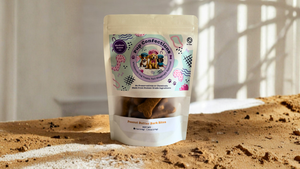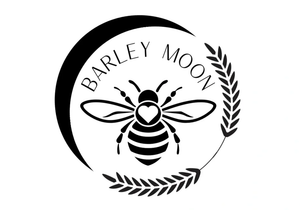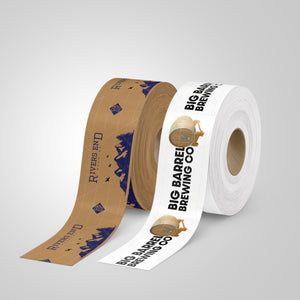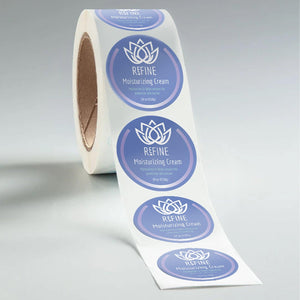How to Start a Craft Business from Home: 7 Steps to Turn Your Idea into Income

Dreaming of turning your crafty skills into a thriving home-based business? Whether you're designing custom stickers, chic t-shirts, or unique 3D-printed items, starting your own craft business could be the perfect way to channel your creativity into a profitable venture.
However, turning your hobby into a business isn't as simple as it may seem. The journey from concept to market involves considerable planning and dedication.
Let’s explore the steps needed to structure your business, create a distinctive brand, and successfully market your products to the right audience, guiding you through the process of how to start a craft business from home seamlessly.

Is Your Product Right for a Craft Business?
Starting a craft business from your home is an exciting journey that requires you to carefully consider how your living space can support your creative endeavors. It's a big decision, and you should consider whether your current living environment can support your crafting needs until you're ready to expand into a commercial space.
The type of products you create can impact your ability to run a successful business out of your home. While paper goods and fabric crafts like custom t-shirts or art prints can be straightforward to produce, they typically require more space for production and storing inventory. On the other hand, custom stickers are small and easy to stack up.
Meanwhile, candle-making could necessitate the use of kitchen spaces, adding a layer of complexity. Similarly, cottage food products require additional considerations such as certifications and maintaining a pet-free environment to meet health standards.

Create Your Brand
Before you jump into selling your products, it's important to establish a strong, cohesive brand that speaks to your target audience. A well-thought-out brand identity includes:
Name
Select a business name that reflects your crafts’ essence and is memorable and easy for customers to recall. The right name sets the tone for your brand and makes a strong first impression on customers. It should resonate with the type of products you offer, be unique enough to stand out in the marketplace, and align with the values and aesthetic of your brand.
Color Scheme
The color scheme of your brand plays a pivotal role in defining its visual identity. Colors can evoke emotions, convey messages, and create associations that are key to distinguishing your brand from competitors. When selecting colors, consider the psychological impact they have and how they represent your brand’s personality. For instance, blue can evoke trust and dependability, while yellow may bring feelings of energy and joy.
Logo
Your logo is often the first visual contact people have with your brand, making it one of the most crucial elements of your branding strategy. A distinctive logo should be simple enough to be easily recognized and versatile enough to be used across various media.
Font Choice
Select a font that ensures readability and accessibility across all forms of communication. Fonts should align with your brand’s overall style and tone, enhancing the textual content without overwhelming it. This careful selection will help maintain clarity and boost your business’s aesthetic appeal.
Tone of Voice
Think of your brand's tone of voice as its personality. How do you want your brand to come across to your audience? Whether it's formal, friendly, informative, or playful, choose a voice that reflects your brand's values and stick with it. Consistency helps make your brand more relatable and memorable to your customers.
Target Audience
Identifying and understanding your audience means you can really dial in your marketing and tailor what you offer to meet their specific likes and needs. Think about their age, their interests, their income, and lifestyle. All this info helps you fine-tune everything from the products you develop to how you brand and promote them.
Price Point
You want your prices to reflect the quality and effort that goes into your crafts, while also matching your customers’ expectations. Consider the cost of materials, time spent, competitive pricing, and perceived value when determining your price points. Getting this balance right helps you stand out in the market and ensures your business stays profitable.
Register Your Craft Business
Once you’ve created your brand, you need to officially register your business. There are a few legal steps you must navigate to legitimize your crafts:
Business Registration
First, you must register your business with the state. Depending on your location, among other factors, you might opt to be a sole proprietor or incorporate as a limited liability company (LLC). Formal registration legalizes your business, protects your personal assets, and establishes your business as a separate legal entity.
Seller’s Permit
Often required if you exceed a certain dollar amount in sales, a seller's permit allows you to legally sell goods within your state. Obtaining this permit is essential for managing state sales tax and staying compliant with local business regulations.
Business Insurance
Business insurance protects you against liabilities and losses, especially for products that might pose risks like food. It provides financial protection against potential lawsuits or accidents that could occur in the course of business operations.
Business Bank Account
Set up a dedicated business bank account to manage your craft business's finances separately from your personal funds. This separation simplifies accounting processes, enhances financial transparency, and is often required by law once your business reaches a certain size.

Package Your Products
Now that you’re ready to start selling, it's time to invest in your packaging design! Your products’ presentation is key to attracting and retaining customers. With Stomp’s easy-to-use design tool, you can create custom labels and packaging that take your crafts to the next level.
Whether you need sleek, professional looks or vibrant, eye-catching graphics, Stomp offers the flexibility to ensure your business captures attention. With our high-quality materials and customizable designs, you can ensure that every detail of your packaging works hard to make a great first impression and build lasting customer loyalty.
Develop an Online Presence
To expand your craft business's reach and engage with a broader audience, you need to create an online presence. By strategically using digital platforms, you can showcase your products, connect with customers, and build a strong brand identity that strikes a chord with your target market.
Website or Online Storefront
Platforms like Etsy are ideal for crafters looking to sell online. Also consider setting up your own website using platforms like Shopify or Wix, which offer more control over the design and customer experience. Having a dedicated website can lend credibility to your business, and with integrated SEO tools, you can enhance your visibility in search engine results, attracting more potential customers.
Social Media
Platforms such as Instagram and Pinterest are perfect for visually showcasing your products. These platforms allow you to engage directly with your audience, receive instant feedback, and build a community around your brand.
Product Launch
Product launches are pivotal events for your craft business. Plan a launch that can create buzz and drive initial sales. Leverage email marketing, social media promotions, and even partnerships with influencers to generate excitement and anticipation. A well-orchestrated launch boosts initial sales and sets the tone for your brand's market entry, laying the groundwork for future marketing efforts.

Take This Show on the Road
Now that your business is set up and you have a final product you’re proud of, it’s time to develop some local support. Participating in craft fairs, shows, and local events can significantly boost your business. These events can help build a loyal following and create a steady stream of revenue. And because you already created a robust online presence, you can inform customers about your next stops or announce where to find your product.
Kick Off Your Craft Business with Stomp
Starting a craft business is a totally achievable dream with the right tools and approach. By following these steps, you can lay down a solid foundation that supports your creative vision and paves the way for business success.
Ready to start a craft business? Check out our custom products for various interests and get started with Stomp today. Here's to happy crafting and turning dreams into reality!

- Nashira Edmiston
















